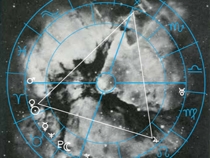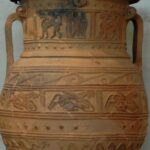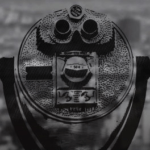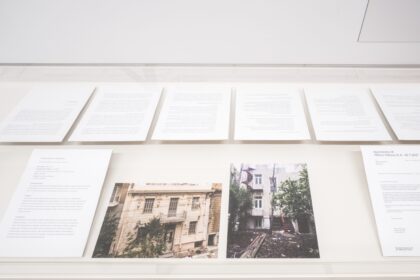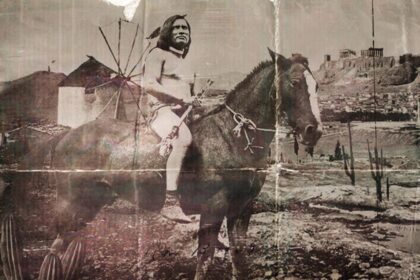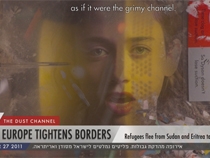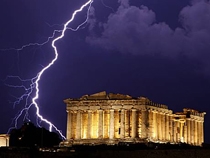Conjectures and Conjunctures: Learning from Astrology and Art /Anthropology in Athens
Arnd Schneider
In 1993, on the pages of Anthropology Today, I published an article “The Art Diviners”[1] where I critically probed into the work contemporary artists had been doing at the borders between art and anthropology, who since the 1960s in their own idiosyncratic, even ‘divinatory,’ ways had anticipated, in part at least, some critical turns in the 1980s and 1990s concerning representational practices (specifically, the Writing Culture and Exhibiting Culture critiques by respectively, Clifford and Marcus, and Karp and Levine).[2] The rest is perhaps history (vide Foster, Schneider & Wright and many more since)[3]—but it seems fitting to me that another class of professional diviners who themselves were seen as practicing an art by deduction in antiquity[4] might now have their take (not necessarily revenge!) on art and anthropology in contemporary times. Such the felicitous idea by Eleana Yalouri and Fotini Gouseti (in this issue) to invite astrologer Bella Kydonaki to lay out her predictions for the documenta 14 assemblage in Kassel and Athens, and the ‘Learning from documenta’ Athenian project which included artists, anthropologists and other social and cultural practitioners. Both were no strangers to involving astrologers, Gouseti with her graduation piece If I can’t dance, I don’t want to be part of your revolution (2013) at the Dutch Art Institute (with the same Bella Kydonaki) and inspired by Christian Jankowski’s hilarious video installation Telemistica for the 1999 Venice Biennale, and Yalouri with another astrologer for her project The Metaphysics of the Greek Crisis. The words used by Bella Kydonaki (of love -‘agape’-, kinship and prophecy) are of a ‘more-than-scientific’ (even social science), if not ‘more-than-human’ idiom, and as such fit almost seamlessly into the transdisciplinary effort of ‘Learning from documenta.’ The idea to look at (contemporary) art institutions through the lens of astrology is not new (as also attested by Gouseti’s and Yalouri’s own antecedents above). In 2014, artist and astrologer K. Tauches put a light-touch counterpoint to the more sober and serious institutional critique (read Hans Haacke), with her Institutional Astrology where she laid predictive charts for major U.S. art institutions, such as the Detroit Institute of Arts, the San Francisco Museum of Modern Art, and the Whitney Museum of Art. Couched in astrological interpretive language where her forecasting for the Detroit Institute of the Arts nevertheless includes some brighter horizons for this institution in a city of former industrial glory, but now long-lasting decay – in this sense another modern, American ruinopolis, the term Hell and Steinmetz applied to Las Vegas[5]. And is Athens not also a mother of ruins in the Western imagination…?

“In this chart, Sun and Venus are conjoined in late Aries, and in a copacetic relationship with Jupiter in dramatic Leo. This spicy triangular alliance creates an easy, forward-minded flow between savvy business, racy aesthetics, and the need for attention. Fueling this threesome (air feeds fire. . .) is the Moon and Pluto conjoined in the light, friendly trickster, Gemini. Social and intellectual aspirations were deep motivators here. Pluto contributes a grave seriousness to this desire, yet in Gemini it’s played like a dazzling party starlet. Chiron, “the wounded healer,” is also in close degree, adding vulnerability and the talent to teach. This original vibe is hard to imagine, seeing Detroit as it is in the 21st century, equally fired up to perform, though with a more grungy kind of celebrity. Don’t worry, the tragedy may just be part of the high stakes drama. Keep in mind recent news: an appraisal of the institute’s collection commissioned by city creditors estimates its worth at $8.5 billion dollars.”[6]
Divination practices have been somewhat foundational for some key texts in the discipline (especially Evans-Pritchard’s Witchcraft, Oracle and Magic Among the Azande 1937, also Kluckhohn’s Navajo Witchcraft 1944), so why should astrology not also foretell the future for anthropology? The affinities in fieldwork and divination practices (which I pointed to in the ‘Art Diviners’), and tracking spoor and evidence as a first science (brilliantly developed by historian Carlo Ginzburg, and in a little known but bold evolutionary hypothesis by Liebenberg) [7] are perhaps also those which serve to understand some of the other projects in ‘Conjunctures.’
In my serendipitous wayfinding across ‘Learning from documenta’s’ terrain, I am thinking here especially of Delia Tzortzaki’s vivid description (On the border of the culturally ‘known’ in this issue), of an ‘unrehearsed encounter’ in connection with the work of Sami artist Joar Nango’s project and party European Everything as part of documenta 14 in Athens. But also, artist Natasa Biza’s The Encounter: An Epistolary Story (in this issue) unrehearsed in another sense, and containing more stories of divination, such as the alleged palm reading for Hitler, by Demetra Messala, Nazi sculptor Arno Breker’s Greek wife—both part of Hitler circle of friends. Wishful retrospective divination is perhaps beside the point here, but perhaps if Hitler had received such a reading during his failed attempts to succeed as an artist in the very early 1900s, things might have turned out differently (…but who knows if for the better for either art or world history…).
However, in a fast forward tracking ‘traces’ of the ancient in modernity, and building on her long track record of research on this topic[8], Eleana Yalouri (Subversive Ideals and Idealized Ruins in this issue), looks into the euphemistic branding, stemming from its mega-show status, of documenta as the ‘Olympic Games’ of contemporary art (where we might note in passing that such games in antiquity, especially the Pythian Games in Delphi, had their own connection to the oracular). She further enquires critically how in documenta 14, antiquity and modernity met under the eye of contemporary artists, and finds missed opportunities, for instance connecting the expressed post-colonial ambition with a view on colonialism in the ancient world.
For my part, I shall not enter here into the merits of documenta 14, which I only paid a brief visit in Kassel and did not see in Athens (for which see the instructive pieces by Despina Zefkili, Katerina Konstantinous, and again Eleana Yalouri in this issue). Yet the archaeology of (post) modernity has its own divinatory principles not only in experimental archaeology, but not least in interpretation, behind which looms large the figure of Hermes (“the messenger god and progenitor of interpretation”)[9] who was not unfamiliar with magical and oracular practices himself[10]. The etymological connection to Hermes might be a tenuous and even doubtful one, but we can think here of hermeneutics not as a level dialogical playing field, but rather spaces of incomplete translation between others (indeed an ‘uneven hermeneutics’)[10], in this case between documenta 14 in its Kassel and Athens iterations and their interpreters ‘learning from documenta’, wo similar to the Greeek artists in both projects assume a position ‘from here.’[12]
Arnd Schneider is a Professor of Social Anthropology, University of Oslo where he researches and teaches on contemporary art, visual anthropology, and international migrations. His new book is Expanded Visions: A New Anthropology of the Moving Image (Routledge, 2021). His other books include Futures Lost: Nostalgia and Identity among Italian Immigrants in Argentina (Peter Lang, 2000) Appropriation as Practice: Art and Identity in Argentina (Palgrave, 2006), and more recently, Alternative Art and Anthropology: Global Encounters (edited; Bloomsbury, 2017). He co-organized the international conference “Fieldworks: Dialogues between Art and Anthropology”, at the Tate Modern, London (2003), and the symposia “Performance, Art and Anthropology” (2009) and “New Visions: Experimental Film, Art and Anthropology” (2012) at the Musée du Quai Branly, Paris.He was a collaborative partner of “TRACES: Transmitting Contentious Cultural Heritages with the Arts” (Horizon 2020), taught at the University of East London and been a Senior Research Fellow at the University of Hamburg.
Notes
[1] Arnd Schneider “The art diviners”, Anthropology Today, 9 (1993), 2, 3-9.
[2] James Clifford and George Marcus (eds). Writing Culture: the Poetics and Politics of Ethnography (Berkeley: University of California Press, 1986) ; Ian Karp and Steven Levine. (eds.) Exhibiting Cultures: The Poetics and Politics of Museum Display. (Washington: Smithsonian Institution Press, 1991).
[3] Hal Foster, “The Artist as Ethnographer”, The Traffic in Culture: Refiguring Art and Anthropology, eds. George Marcus and Fred Myers, (Berkeley: University of California Press 1995) ; Arnd Schneider, “Uneasy relationships: contemporary artists and anthropology”, Journal of Material Culture, 1(2), 1996, 183-210. Arnd Schneider and Christopher Wright (eds), Contemporary Art and Anthropology (Oxford / New York: Berg, 2006), and Between Art and Anthropology: Ethnographic Practice (Oxford / New York: Berg, 2010).
[4] Cicero, De Divinatione (On Divination), English translation by William Armistead Falconer, Loeb Classical Library, 1923; Book I, 6,11; 18,34; 49,109-110,113. https://penelope.uchicago.edu/Thayer/E/Roman/Texts/Cicero/de_Divinatione/1*.html (accessed 03/12/2020).
[5] Julia Hell and George Steinmetz, “Ruinopolis: Post-Imperial Theory and Learning from Las Vegas”, International Journal of Urban and Regional Resarch, 2014, 38 (3), 1047 – 68.
[6] Karen Touches, Institutional Astrology, 2014, Institutional Astrology – Art Papers (accessed 03/12/2020).
[7] Carlo Ginsburg, “Clues: Roots of an Evidential Paradigm”, Clues, Myths, and the Historical Method, (Baltimore: Johns Hopkins University Press,1989; Louis Liebenberg, Art of Tracking: The Origin of Science, (Cape Town and Johannesburg: David Philipp Publishers, 1990).
[8] Eleana Yalouri, The Acropolis: Global Fame, Local Claim (Oxford /New York: Berg Publishers, 2001).
[9] Vincent Crapanzano, Hermes Dilemma and Hamlet’s Desire: On the Epistemology of Interpretation, (Cambridge, Mass.: Harvard University Press, 1992), p. 150.
[10] Wings, wand, a magical hat, and associations with dice throwing are mentioned; see Paul Friedrich,The Meaning of Aphropdite (Chicago: University of Chicago Press, 1982) pp. 204 – 205; also F. Graf, Rolling the Dice for an Answer, in: S.I. Johnston & P.T. Struck (eds.), Mantikê. Studies in Ancient Divination (Leiden: Brill 2005), pp. 74 – 75.
[11] Arnd Schneider, “Alternatives: World Ontologies and Dialogues Between Contemporary Arts and Anthropologies“, Alternative Art and Anthropology: Global Encounters (London: Bloomsbury, 2017) , p. 15, p. 21 and “Between Uneven Hermeneutics and Alterity: The Dialogical Principle in the Art – Anthropology Encounter“, FIELD: Journal of Socially Engaged Art Criticism Fall 2018, online/no page numbering http://field-journal.com/stagejanV2/issue-11/between-uneven-hermeneutics-and-alterity-the-dialogical-principle-in-the-art-anthropology-encounter.
[12] Gerardo Mosquera. Walking with the Devil: Art, Culture and Internationalization.Cultural Expression, Creativity and Innovation. Eds. Helmut Anheier / Yudhistithir Raj Isar. (London: Sage, 2010), p.53.

